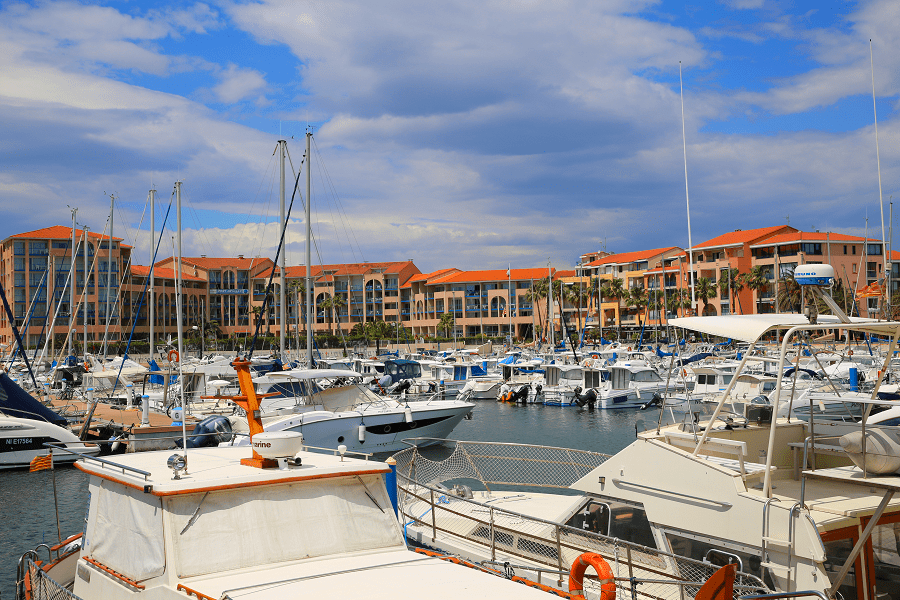Tourism in France is an important economic sector, for both foreigners and natives who choose to spend their holidays there. According to figures from the World Tourism Organization, since the 1990s, France has been the leading tourist destination in the world (90 million international tourist arrivals in 2019).
However, it ranks sixth in hotel stays, with 137 million nights, behind the United States, Spain, Italy, China and the United Kingdom, and third (behind the United States and Spain) regarding international tourism receipts.
There are many reasons France is a major tourist attraction: the large number and variety of points of interest and landscape diversity, its diverse gastronomic, historical, cultural and artistic heritage, the temperate climate, ease of access and its transport infrastructure. There are also a large and varied number of hotels, restaurants, amusement parks, etc. Thus, each French department is a tourist department with several points of interest.
A July 2019 survey shows that international tourists mainly come from the United Kingdom (14.6%), Germany (13.7%), Belgium and Luxembourg (13%). Italy, Switzerland and Spain represent about 7.5%.
Tourism has a positive economic impact but generates significant environmental influences, in space (transport, energy, waste flows) and in time (immediate and delayed impacts ). Tourism represents 7% of France’s GDP and 2 million direct and indirect jobs. However, the effect of COVID-19 seems to be over: in the first half of 2023, the total number of French tourist nights reached 184 million, exceeding and setting a new record for the country.
Travel guides by regions
Auvergne-Rhône-Alpes (Lyon)
Bourgogne-Franche-Comté (Dijon)
Bretagne (Rennes)
Centre-Val de Loire (Orléans)
Grand Est (Strasbourg)
Hauts-de-France (Lille)
Île-de-France (Paris)
Normandie (Rouen)
Nouvelle-Aquitaine (Bordeaux)
Occitanie (Toulouse)
Pays de la Loire (Nantes)
Provence-Alpes-Côte d’Azur (Marseille)
TOP 10 destinations
Paris
Paris, the capital city of France, is the third most visited city in the world.
It has some of the world’s largest and renowned museums, including the Louvre, which is the most visited art museum in the world, but also the Musée d’Orsay which, like the nearby Musée de l’Orangerie, is mostly devoted to impressionism, and Centre Georges Pompidou, dedicated to Contemporary art.
Paris hosts some of the world’s most recognizable landmarks such as the Eiffel Tower, which is the most-visited paid monument in the world, the Arc de Triomphe, the cathedral of Notre-Dame, or the Sacré-Cœur on Montmartre. The Cité des Sciences et de l’Industrie, located in Parc de la Villette, is the biggest science museum in Europe. Near Paris are located the Palace of Versailles, the former palace of the Kings of France, now a museum, and the medieval village of Provins. Both attractions are protected as UNESCO World Heritage Sites.
French Riviera
With more than 10 million tourists a year, the French Riviera, in Southeastern France, is the second leading tourist destination in the country, after the Parisian region.
According to the Côte d’Azur Economic Development Agency, it benefits from 300 days of sunshine per year, 115 kilometres (71 mi) of coastline and beaches, 18 golf courses and 3,000 restaurants. Each year the Côte d’Azur hosts 50% of the world’s superyacht fleet, with 90% of all superyachts visiting the region’s coast at least once in their lifetime.
Main cities on the French Riviera include Nice, Antibes and Cannes; Cap Ferrat is also a popular destination. Cannes hosts the annual Cannes Film Festival. Tourists often visit Port-Cros National Park, east of Toulon, as well as the city-state of Monaco, famous for its Monte Carlo Casino, near the Italian border.
Atlantic resorts of France
Loire Valley
Another major destination are the Châteaux (castles) of the Loire Valley. The French Revolution saw a number of the great French châteaux destroyed and many ransacked, their treasures stolen. The overnight impoverishment of many of the deposed nobility, usually after one of its members lost his or her head to the guillotine, saw many châteaux demolished.
During World War I and World War II, some chateaux were commandeered as military headquarters. Some of these continued to be used this way after the end of the Second World War.
This World Heritage Site is noteworthy for the quality of its architectural heritage, in its historic towns such as Amboise, Angers, Blois, Chinon, Orléans, and Saumur, but in particular for its castles, such as the Châteaux d’Amboise, de Chambord, d’Ussé, de Villandry, de Chenonceau and de Montsoreau, which illustrate to an exceptional degree the ideals of the French Renaissance.
French Alps and ski
The French Alps are the portions of the Alps mountain range that stand within France, located in the Rhône-Alpes and Provence-Alpes-Côte d’Azur regions. While some of the ranges of the French Alps are entirely in France, others, such as the Mont Blanc massif, are shared with Switzerland and Italy.
More than 20 skiing resorts make it a popular destination among Europeans in the winter.
Beautiful villages association





